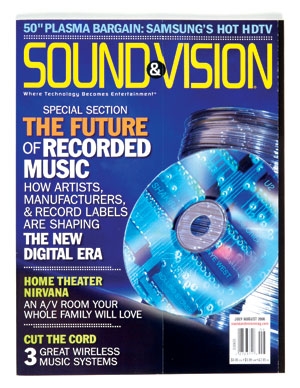50 Greatest A/V Innovations Page 7
| Click here to see a gallery of innovative products. |
43. High-Power Amplifiers Bob Carver rocked the audio world in 1972 with the Phase Linear 700 power amplifier, unprecedentedly (and honestly) rated at 350 watts per channel. In testing it, Stereo Review's Julian Hirsch noted that such high power really could be valuable when playing highly dynamic music on low-efficiency speakers.
44. Digital Amplifiers Going back to the Infinity SWAMP 1 of the mid-1970s, digital amps have had a checkered history, but they seem finally to have turned the corner in terms of reliability and performance. Highly efficient and cool-running, they promise to play a bigger role in the future.
45. DLP Tops on my list of highly improbable technologies, Texas Instruments' Digital Light Projection (developed in 1987 and first commercialized in 1996) - with its hundreds of thousands of tiny rotatable mirrors on a silicon chip - changed the face of projection TV, enabling compact, high-performance projectors at affordable prices.
46. HDMI Just 5 years old, the High-Definition Multimedia Interface offers a welcome simplification of audio and video connections, with just a single cable required (as opposed to the four or five needed with component video, for example).
47. KLH Model Eleven Portable Stereo System Introduced in 1960, it was basically a high-quality transistorized audio system in a suitcase, with a record changer, a built-in amplifier, and detachable stereo speakers. And it sounded as good as or better than plenty of home systems of the time.
48. Thiele-Small Equations Extending the insights of Hoffman's Iron Law for acoustic-suspension speakers (after KLH's J. Anton Hoffman), the work of engineers Neville Thiele and Richard Small (1961 through 1972, primarily) took the guesswork and cut-and-try out of designing ported speakers, leading the way to better and more consistent performance.
49. Computerized Speaker Measurement and Design Systems like LEAP, TEF, and MLSSA were a big step forward for speaker designers (especially at companies too small to consider anechoic chambers), speeding the engineering process and improving the results.
50. Kits Legions of audiophiles cut their teeth building amps and preamps from Heath, Dynaco, and other companies, saving money while getting a hands-on education in how the gear worked - that is, until the 1980s, when selling kits finally became more expensive than full factory-assembly.





























































